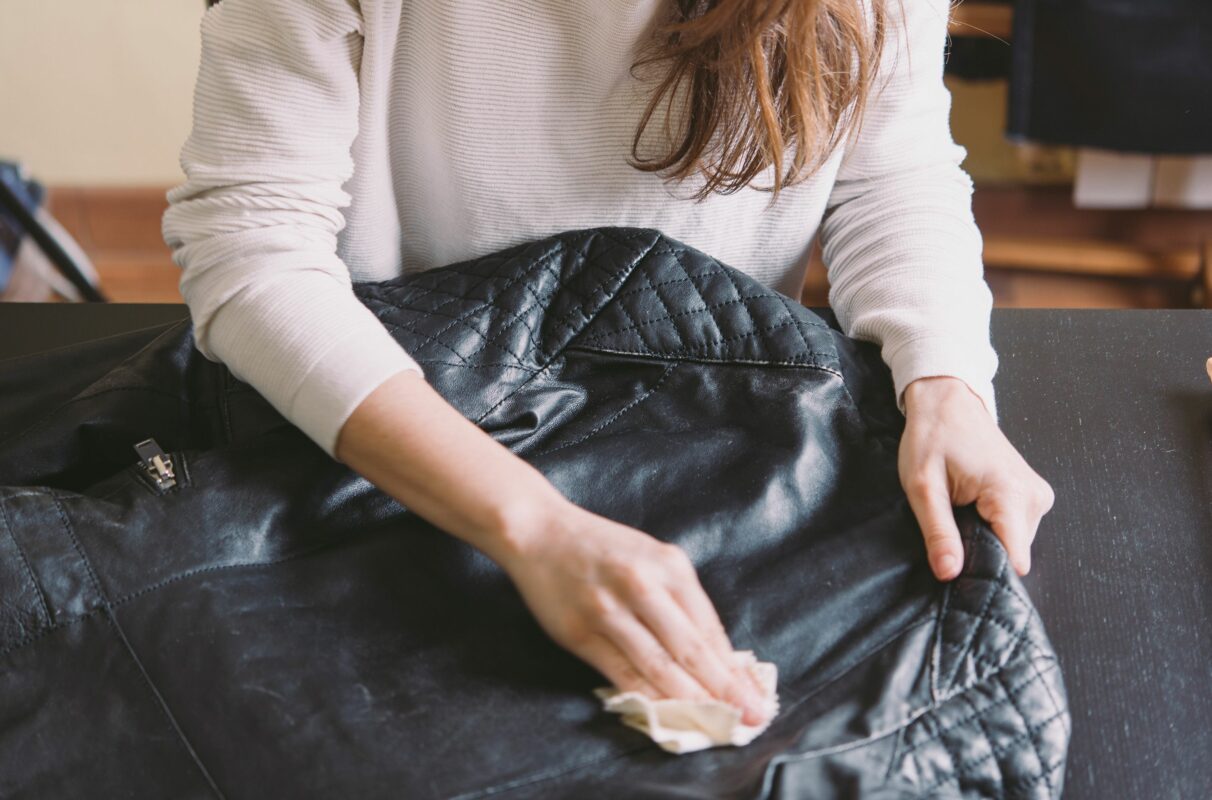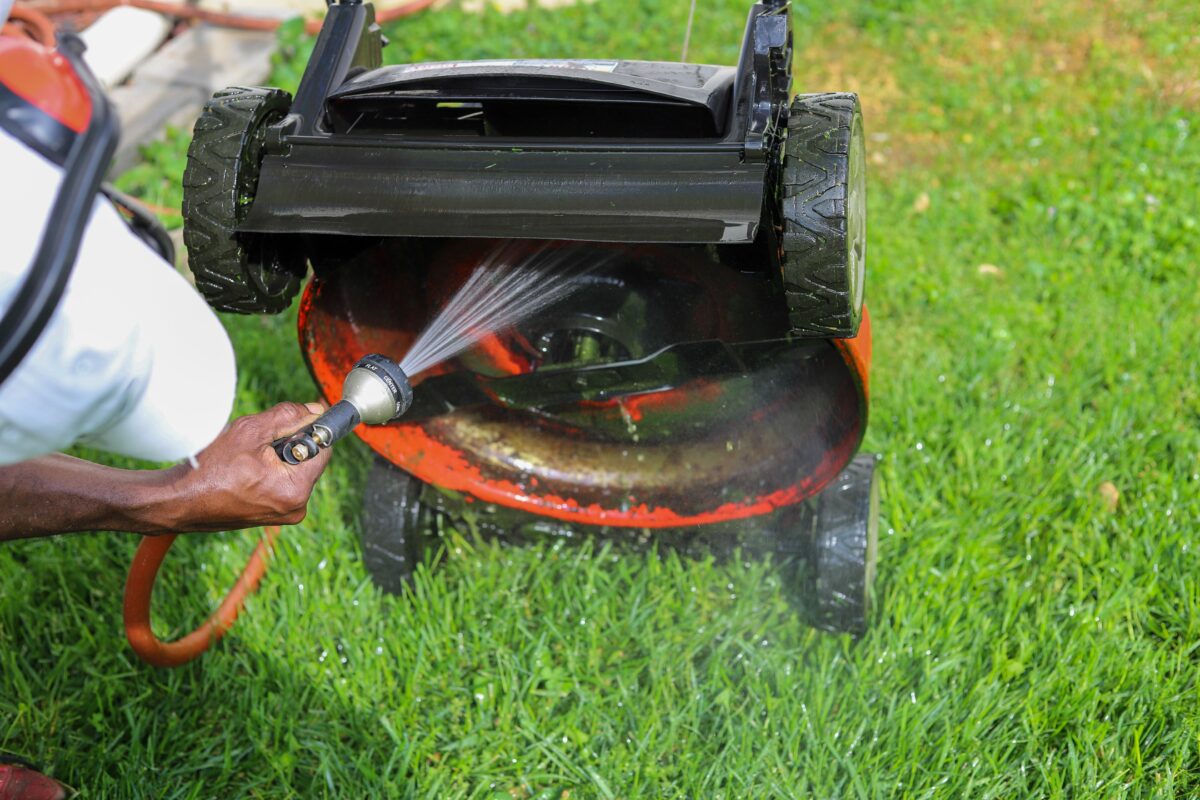Backpacks are high-touch items that are easy to overlook with routine laundry. However, keeping backpacks clean helps maintain their good looks and prevents the spread of illness by keeping germs and bacteria at bay. (It can also prevent a week-old forgotten lunch from turning into a months-old mold colony where lunch used to live.)
Cleaning a backpack is easy, though methods vary, and some require more time and hands-on effort than others. This guide explains how to clean fabric, leather, and clear plastic or PVC backpacks using different methods, including spot cleaning, machine washing, and hand laundering, plus when to choose one approach over another.
How Often to Clean a Backpack
Backpacks should be washed at least twice a year to remove dirt, stains, and smells and to eliminate the buildup of germs and bacteria. Ideally, a backpack should be washed monthly and emptied every other week to prevent clutter, crumbs, and forgotten food from becoming major messes.
Backpacks used for sports equipment, gym gear, and outdoor activities should also be washed frequently to kill odor-causing bacteria. Quick cleaning after travel is also recommended.
How to Clean a Backpack Quickly Using Cleaning Wipes
Cleaning wipes formulated for use on fabrics, such as Crocodile Cloth, and those made for carpet and upholstery are a quick and easy way to clean a backpack. Using a wipe keeps bags clean and germ-free between washings and is especially recommended for wiping areas on a backpack where dirt and grime tend to build up, like the straps, corners, and bottom of the bag.
Using wipes to clean high-touch straps and handles, in particular, is recommended on a regular basis during cold and flu season or when someone in your household is sick to prevent transferring illness-causing bacteria and viruses via skin contact.
Some cleaning wipes intended for use on hard, nonporous surfaces can also be used to clean fabric and leather backpacks. Before using a wipe that isn’t formulated for cleaning fabric, perform a spot test in an inconspicuous area, such as an inner seam or the bottom of the backpack, to ensure it won’t cause damage.
How to Machine-Wash a Fabric Backpack
When deeper cleaning is called for, the easiest way to give fabric backpacks an all-over clean is to machine-wash them. Before getting started, consult the guidelines on the care tag or in the online product description for washing instructions. The following general machine-washing instructions apply to most fabric backpacks, including nylon, polyester, canvas, and cotton bags. Fabric backpacks with leather trim should not be machine-washed unless the care tag specifies otherwise.
1. Empty the Contents
Open the backpack, including any pockets, and empty the contents of the bag. If there is debris in the bottom of the bag, turn it upside down over a trash can and gently shake out dirt, dust, hair, and other detritus. Leave the pockets unzipped or unfastened when washing.
2. Make Small Repairs
Check the backpack for damage and make any necessary repairs prior to washing. Then, cut any loose threads and remove detachable straps or parts, including embellishments such as pins or ribbons.
3. Apply Stain Pre-Treatment
Backpacks are usually considered heavily soiled items, and applying a stain pre-treatment product can help break down grime and set-in stains, especially on the straps and bottom of the bag. Environmental and body soils are protein stains and are best eliminated using an enzyme cleaner. Most general-purpose laundry stain removers, such as Shout, Zout, or OxiClean Max Force, contain enzymes that break down protein stains. Enzyme cleaners need time to work, so plan to leave at least 15 minutes and up to 8 hours for the pre-treatment to penetrate and break down stains before laundering.
4. Wash in Cold Water
Wash the backpack in cold water using the delicate washer cycle. To prevent damage to the backpack’s straps and zippers, place it in a protective washing bag. Wash it alongside similar items, avoiding washing it in the same load as bulky or heavy items such as jeans or sweatshirts. Wash it in a load with two towels as a buffer against the washer’s metal drum.
5. Reshape and Air-Dry
Remove the backpack from the washing machine and reshape it using your hands. Then, lay it flat to dry on a clean, absorbent towel or a mesh drying rack.
Don’t hang the backpack to dry. It can put undue stress on the straps.
How to Hand-Wash a Fabric Backpack
While most fabric backpacks can be machine-washed, there are times when washing by hand is a better choice. This may be the case if the care tag calls for hand laundering, the bag is delicate or in a fragile condition, or you cannot get to a laundry facility.
1. Empty, Make Repairs, and Treat Stains
Before laundering a fabric backpack by hand, follow the first three steps outlined in the machine-washing instructions. After checking the care tag for instructions, empty the backpack, make any needed repairs, and apply a stain pre-treatment product to the heavily soiled areas of the bag.
2. Fill Basin with Water
Fill a basin—usually the tub or sink, or a wash basin if those spaces are not available—with cool water (or the temperature recommended on the care label). Add a teaspoon of detergent, resisting the urge to use more than the recommended dose.
Using too much detergent can leave the backpack with soap residue, which lends a dingy appearance to the bag.
3. Submerge and Soak
Submerge the backpack with your hands, using a swirling motion to allow the sudsy water to penetrate the fabric. Then, soak the backpack in the detergent solution for at least 15 minutes up to overnight.
4. Rinse in Cool Water
Drain the wash water, and refill the basin with cool water. Using a pumping motion, press up and down on the backpack to push the clean water through the fibers to rinse away dirt and detergent. Repeat the process until the water runs clean. Drain the water and gently press down on the backpack to extrude as much water as possible.
To avoid weakening or damaging the fibers, don’t wring or twist the backpack.
5. Reshape and Air-Dry
Remove the backpack from the basin and roll it up in a clean, absorbent towel, gently pressing to push out water. Use your hands to reshape the bag. Then, lay it flat to dry on a clean towel or a mesh drying rack.
How to Spot-Clean a Fabric Backpack
Spot treating, also called spot cleaning, refers to treating a specific stain on a small area without washing an entire item. Before spot-treating a backpack, empty the contents of the bag and consult the care tag for specific cleaning instructions.
1. Identify the Stain
If possible, identify the stain that needs to be removed so you can pick the best stain remover for the job. If the stain is a grease stain from butter, oil, bike grease, or a similar product, using absorbent cornstarch is recommended. If you are unsure what the stain is, use liquid laundry detergent, an all-purpose enzymatic stain remover, or high-quality dish soap for a spot treatment.
2. Apply Stain Remover
Apply the stain remover to a damp, light-colored cloth rather than directly onto the stain. Using a white or light-colored cloth helps prevent dye transfer. If the stain is deeply set in, use a laundry brush to introduce more mechanical action to the stain-removal process.
3. Dab the Stain
Dab the stain remover onto the stain using the cloth or laundry brush. Gently blot the stain, reapplying the stain remover to the cloth as needed. Avoid scrubbing the stain, which can grind it deeper into the fibers, causing it to spread and possibly abrade the fabric.
4. Rinse
Rinse the cloth well and gently dab the area with clean water, rinsing and repeating as needed to remove residue from the stain remover. Alternately, hold the section of the backpack that you spot treated under cool running water to rinse out dirt residue.
5. Reshape and Air-Dry
Reshape the backpack and lay it flat to dry on a clean towel or a mesh drying rack.
How to Clean a Leather Backpack
Leather backpacks should not be machine-washed, nor can they be hand-laundered in water. Instead, use a leather cleaner and conditioner and a soft bristle brush to remove stains and to hydrate and protect the bag so it can be used for years to come. Before using a leather conditioner, consult the packaging instructions for guidelines on how much to apply and how long to allow contact with the leather.
1. Brush the Leather
Use a dry, soft bristle brush to gently brush the entire exterior of the backpack to remove dirt, dust, and other loose soils.
2. Apply Leather Cleaner
Apply a small amount of leather cleaner to the brush. Using firm but gentle pressure, brush the cleaner into the leather in a circular motion, applying more as needed but taking care to use a sparing amount (a little leather cleaner goes a long way). Pay particular attention to the handles, bottom, and corners of the bag, where dirt and grime tend to build up.
3. Buff the Bag
After applying the leather cleaner, use a soft, light-colored cloth to wipe away any residue and buff the bag.
4. Apply Leather Conditioner (Optional)
After cleaning a leather backpack, apply a thin coating of leather conditioner using a clean, soft cloth. Leather conditioners restore moisture, helping to keep bags supple and preventing cracking, and add an extra layer of protection against stains and water damage.
How to Wash a Clear Backpack
Many schools and entertainment venues require clear backpacks for security reasons. These bags, made of clear plastic or PVC, can be washed and dried by hand, almost in the same way you’d do dishes.
1. Empty Contents and Make Repairs
Empty the contents of the backpack and make any needed repairs, including trimming loose threads.
2. Fill Basin
Fill a basin, such as a sink, bathtub, or wash bin, with cool water and add a small amount of liquid laundry detergent or mild dish soap.
3. Submerge and Scrub
Submerge the backpack in the sudsy solution and gently scrub it with a light-colored rag, such as a white washcloth. Pay particular attention to the seams and the tape attaching the zipper to the plastic, which tend to be the grimiest spots.
4. Rinse
Drain the wash water and rinse the bag well. It is important to rinse all the soap residue to avoid leaving the backpack with a dull, cloudy appearance.
5. Towel Dry
After washing, dry a clear backpack with a clean, absorbent towel. Then, hang or prop the backpack upside down to finish drying. Placing it upside down prevents water from collecting in the bottom corners of the bag while it dries.














